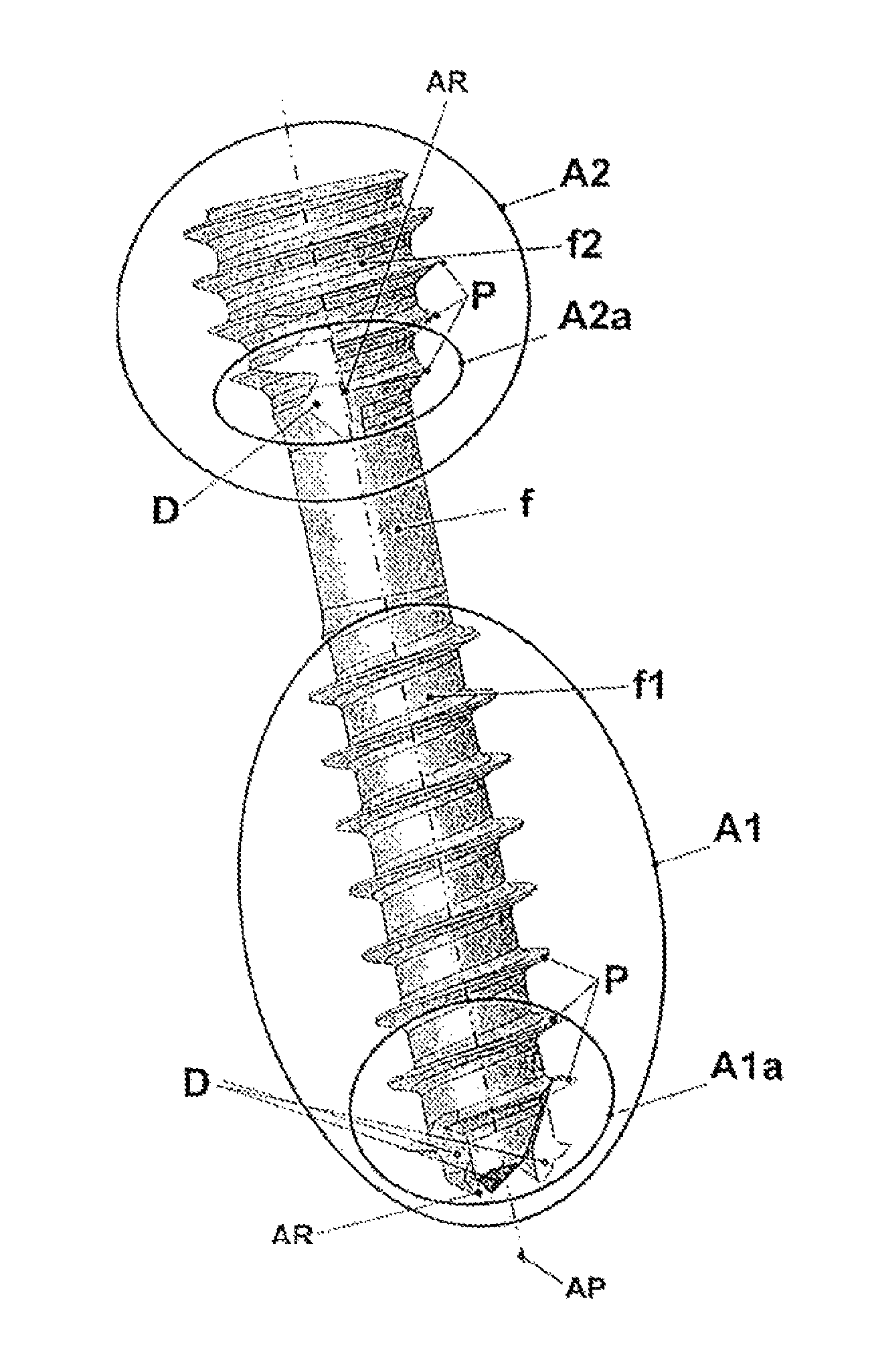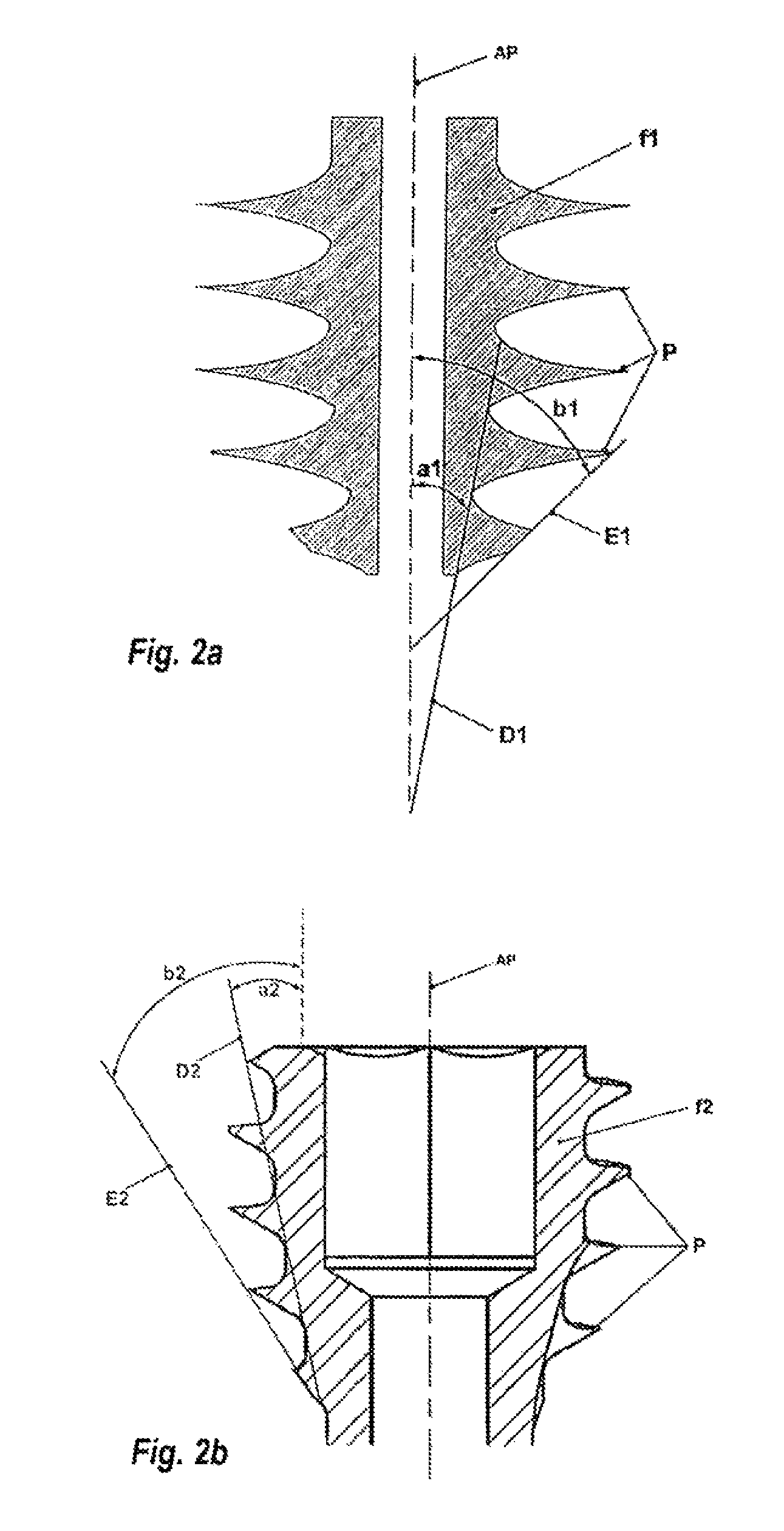Screw for osteosynthesis and arthrodesis
a technology of arthrodesis and screws, which is applied in the direction of internal osteosynthesis, osteosynthesis devices, fasteners, etc., can solve the problems of screw weakening, easy breakage of teeth thus defined, and inability to achieve good penetration at the cylindrical end
- Summary
- Abstract
- Description
- Claims
- Application Information
AI Technical Summary
Benefits of technology
Problems solved by technology
Method used
Image
Examples
Embodiment Construction
[0052]FIG. 1 shows a general view of the screw according to the embodiment of the invention most particularly described here, which shows two anchoring zones, namely a distal portion A1 and a proximal portion A2. The core formed with the screwthread, also called the barrel f, is generally cylindrical. For consistency, f1 is the portion of the barrel of the zone A1 at the distal end A1, that is to say the body of the screw except for the threads, and f2 is the portion of the barrel of the zone A2 at the proximal end A2. Each zone A1 and A2 has threads P and forms an attack zone (the first to come into contact with the bone and to bite into it when screwing in) A1a at the distal end, and A2a at the proximal end followed by a screwing zone.
[0053]The distal and proximal attack zones Ala and A2a each comprise several teeth D, for example three teeth each defining a cutting ridge AR. These teeth D are formed by a notch or cut parallel to a main axis AP of the screw in order to create a cu...
PUM
 Login to View More
Login to View More Abstract
Description
Claims
Application Information
 Login to View More
Login to View More - R&D
- Intellectual Property
- Life Sciences
- Materials
- Tech Scout
- Unparalleled Data Quality
- Higher Quality Content
- 60% Fewer Hallucinations
Browse by: Latest US Patents, China's latest patents, Technical Efficacy Thesaurus, Application Domain, Technology Topic, Popular Technical Reports.
© 2025 PatSnap. All rights reserved.Legal|Privacy policy|Modern Slavery Act Transparency Statement|Sitemap|About US| Contact US: help@patsnap.com



